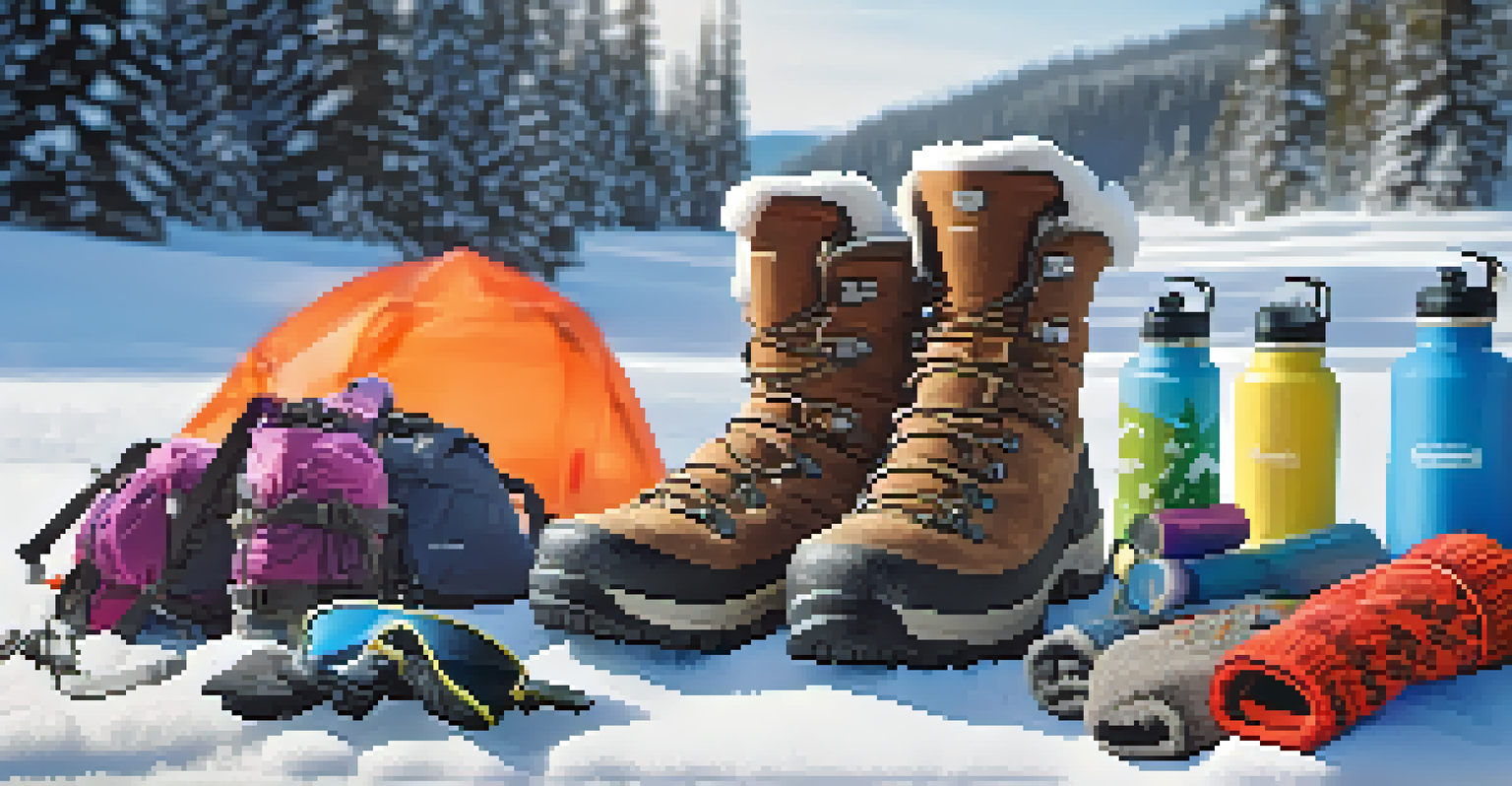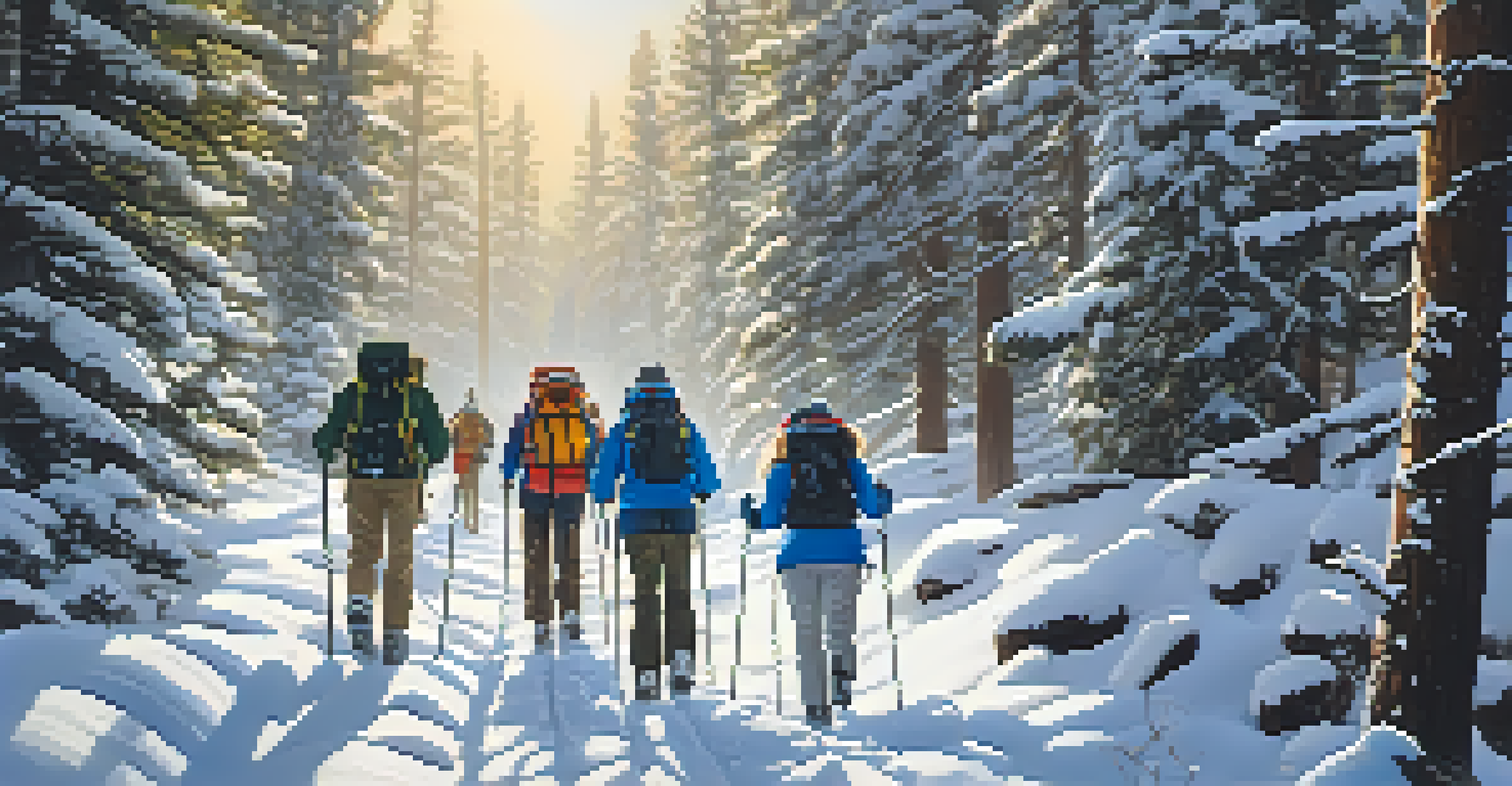How to Prepare for Winter Hiking in Big Bear

Understanding the Winter Weather Conditions in Big Bear
Winter in Big Bear can be a beautiful yet unpredictable time for hikers. Temperatures can drop significantly, and snow can blanket the trails, creating both stunning scenery and potential hazards. Knowing what to expect can help you plan effectively and stay safe during your hike.
There’s no such thing as bad weather, only inappropriate clothing.
Before you head out, check the weather forecast and be aware of any storm warnings. Conditions can change rapidly, so it's wise to prepare for the worst-case scenario. This not only enhances your safety but also allows you to make the most of your winter adventure.
Winter weather can also impact trail accessibility. Some paths may be closed or require specific gear like snowshoes or crampons. Familiarize yourself with the trails and their current conditions, so you choose a route that matches your skill level and equipment.
Choosing the Right Gear for Winter Hiking
Having the right gear is crucial when it comes to winter hiking. Layering is key; start with moisture-wicking base layers, add insulating layers, and finish with a waterproof shell. This method keeps you warm while allowing moisture to escape, preventing you from getting too cold or sweaty.

Don’t forget about essential accessories like gloves, hats, and thermal socks. These items can dramatically improve your comfort level on the trail. A good pair of waterproof boots is also a must—cold, wet feet can quickly ruin your hike.
Prepare for Big Bear's Winter Hikes
Understanding weather conditions and trail accessibility is crucial for a safe and enjoyable winter hiking experience.
Finally, consider bringing trekking poles and gaiters. Trekking poles provide stability on slippery surfaces, while gaiters help keep snow out of your boots. With the right gear, you'll be well-prepared to tackle Big Bear's winter trails.
Planning Your Hiking Route and Duration
When planning a winter hike, choosing the right route is essential. Opt for trails known for their accessibility and safety during winter months. Research online resources or local hiking forums to find recommendations for routes that are well-maintained and popular among winter hikers.
Preparation is the key to success.
It's also important to consider the duration of your hike. Shorter daylight hours in winter mean you should plan to start early and finish well before sunset. Give yourself extra time to navigate potentially tricky terrain and to rest when needed.
Remember to inform someone about your intended route and expected return time. This simple step can make a big difference should anything go awry during your hike. Safety should always be your top priority.
Staying Hydrated and Energized on the Trail
Staying hydrated is just as important in winter as it is in summer, even if you don’t feel as thirsty. Cold weather can mask your body’s signals for hydration, so make it a habit to drink water regularly. Carry an insulated water bottle to prevent your drink from freezing.
In addition to hydration, snacking on high-energy foods can keep your spirits up and energy levels steady. Trail mix, energy bars, and jerky are great options that are easy to pack. Make sure to take breaks to refuel, as this will help maintain your stamina throughout the hike.
Essential Gear for Winter Hiking
Layering your clothing and using the right accessories can significantly enhance your comfort and safety on the trails.
It's also smart to consider the types of food you bring. Opt for items that are easy to consume on the go and won't freeze solid. A warm thermos of soup or hot chocolate can be a delightful treat during your breaks, boosting both your morale and energy levels.
Essential Navigation Tools for Winter Hiking
Winter can obscure trail markers, making navigation more challenging. It's essential to carry a reliable map and compass, even if you plan to use GPS on your phone. Technology can fail, especially in cold conditions, so having a paper backup is a smart strategy.
Familiarize yourself with the area before heading out. Studying the map and understanding key landmarks can help you stay oriented. If you're hiking in an unfamiliar area, consider downloading offline maps in case you lose signal.
Additionally, a GPS device or a dedicated hiking app can enhance your navigation experience. Some apps even allow you to track your route, helping you find your way back if needed. With the right navigation tools, you can feel confident exploring Big Bear's winter wonderland.
Recognizing and Avoiding Winter Hazards
Winter hiking comes with its own set of hazards that hikers need to be aware of. Ice patches, deep snow, and sudden weather changes can pose significant risks. Always stay alert and be prepared to turn back if conditions become unsafe.
Avalanches are another serious concern in certain areas. Before heading out, check avalanche forecasts and avoid steep, snow-covered slopes if conditions are risky. Understanding snow conditions can be the difference between a safe adventure and a dangerous situation.
Stay Safe with Emergency Supplies
Packing a first aid kit, navigation tools, and extra clothing can be vital for handling unexpected situations during your hike.
Frostbite and hypothermia are also potential dangers in the winter. Recognizing the early signs of these conditions is crucial. Symptoms may include numbness, shivering, or extreme fatigue. Knowing when to seek shelter and warm up can help ensure a safe hiking experience.
Packing the Right Emergency Supplies
No matter how well you prepare, it's wise to carry emergency supplies during your winter hike. A basic first aid kit, headlamp, and whistle can be invaluable in case of unforeseen situations. Make sure your first aid kit includes items like band-aids, antiseptic wipes, and any personal medications.
Additionally, a multi-tool can serve many purposes, whether you need to fix gear or prepare food. Carrying extra clothing, like a warm layer and gloves, can also be a lifesaver if you get wet or too cold.

Lastly, consider packing a space blanket or emergency bivy sack. These lightweight items can provide warmth if you need to stop for an extended period. Being prepared for emergencies will give you peace of mind as you enjoy the beauty of winter in Big Bear.